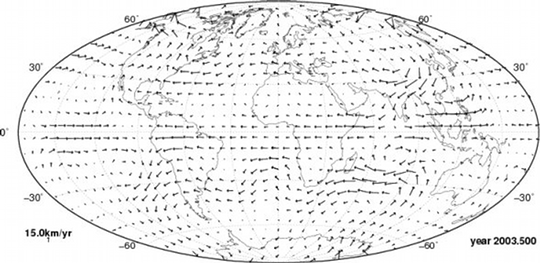The downward continuation of the secular variation and the main field from the Earth's surface to the core mantle boundary can be used to diagnose the generating processes of temporal changes in the core field. The secular variation of the magnetic field at a fixed point is determined by two processes and described by the electromagnetic induction equation. First, there is a change in the field due to the motion (advection) of magnetic flux tubes (magnetic field lines) driven by the motion of the fluid outer core. Second, the diffusion of the magnetic field due to ohmic dissipation. Several assumptions (simplifications) have to be made in order to quantify the fluid motion at the core surface. Generally it is assumed that advection acts on a shorter time scale than diffusion, therefore diffusion is disregarded in the computation of the core surface flow. This is the so-called Frozen flux approximation. However, this approximation is not sufficient to derive the core surface flow. Further assumptions need to be made to estimate the motion uniquely. Among those is the steady motion theorem. It states that the flow is the same at three different times for a given point on the core surface. The tangentially geostrophic motion theorem is based on evaluations of the momentum equation of an incompressible, inviscid fluid in a rotating frame of reference (Navier-Stokes equation). It yields that the motion is driven by the balance of Coriolis and pressure gradient forces, which is very similar to the atmosphere. Apart from an ambiguous region along the equator (where the Coriolis force vanishes) the tangentially geostrophic motion theorem provides unique estimates of the core surface flow. Other theorems, like the purely toroidal and helical flow have been proposed and are only mentioned here. The flow maps provided by these different assumptions are similar.



